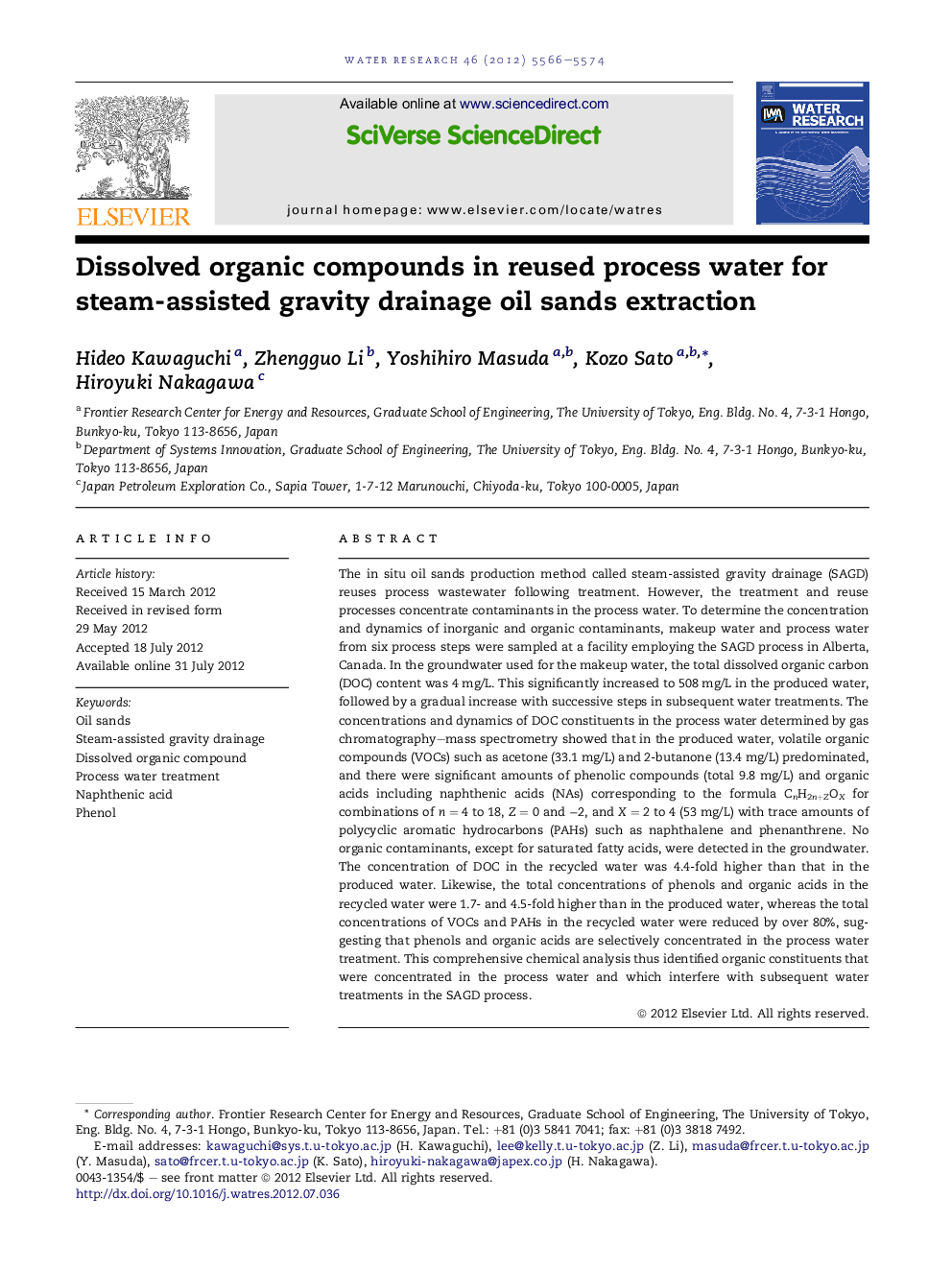| Article ID | Journal | Published Year | Pages | File Type |
|---|---|---|---|---|
| 4482594 | Water Research | 2012 | 9 Pages |
The in situ oil sands production method called steam-assisted gravity drainage (SAGD) reuses process wastewater following treatment. However, the treatment and reuse processes concentrate contaminants in the process water. To determine the concentration and dynamics of inorganic and organic contaminants, makeup water and process water from six process steps were sampled at a facility employing the SAGD process in Alberta, Canada. In the groundwater used for the makeup water, the total dissolved organic carbon (DOC) content was 4 mg/L. This significantly increased to 508 mg/L in the produced water, followed by a gradual increase with successive steps in subsequent water treatments. The concentrations and dynamics of DOC constituents in the process water determined by gas chromatography–mass spectrometry showed that in the produced water, volatile organic compounds (VOCs) such as acetone (33.1 mg/L) and 2-butanone (13.4 mg/L) predominated, and there were significant amounts of phenolic compounds (total 9.8 mg/L) and organic acids including naphthenic acids (NAs) corresponding to the formula CnH2n+ZOX for combinations of n = 4 to 18, Z = 0 and −2, and X = 2 to 4 (53 mg/L) with trace amounts of polycyclic aromatic hydrocarbons (PAHs) such as naphthalene and phenanthrene. No organic contaminants, except for saturated fatty acids, were detected in the groundwater. The concentration of DOC in the recycled water was 4.4-fold higher than that in the produced water. Likewise, the total concentrations of phenols and organic acids in the recycled water were 1.7- and 4.5-fold higher than in the produced water, whereas the total concentrations of VOCs and PAHs in the recycled water were reduced by over 80%, suggesting that phenols and organic acids are selectively concentrated in the process water treatment. This comprehensive chemical analysis thus identified organic constituents that were concentrated in the process water and which interfere with subsequent water treatments in the SAGD process.
Graphical abstractFigure optionsDownload full-size imageDownload high-quality image (164 K)Download as PowerPoint slideHighlights► Organic contaminants in SAGD process water were determined by GC–MS analysis. ► Contaminants were concentrated within water treated for subsequent reuse. ► PAH and VOC components were effectively removed by the water treatment. ► Few polar compounds were removed but were concentrated in the recycling process.
